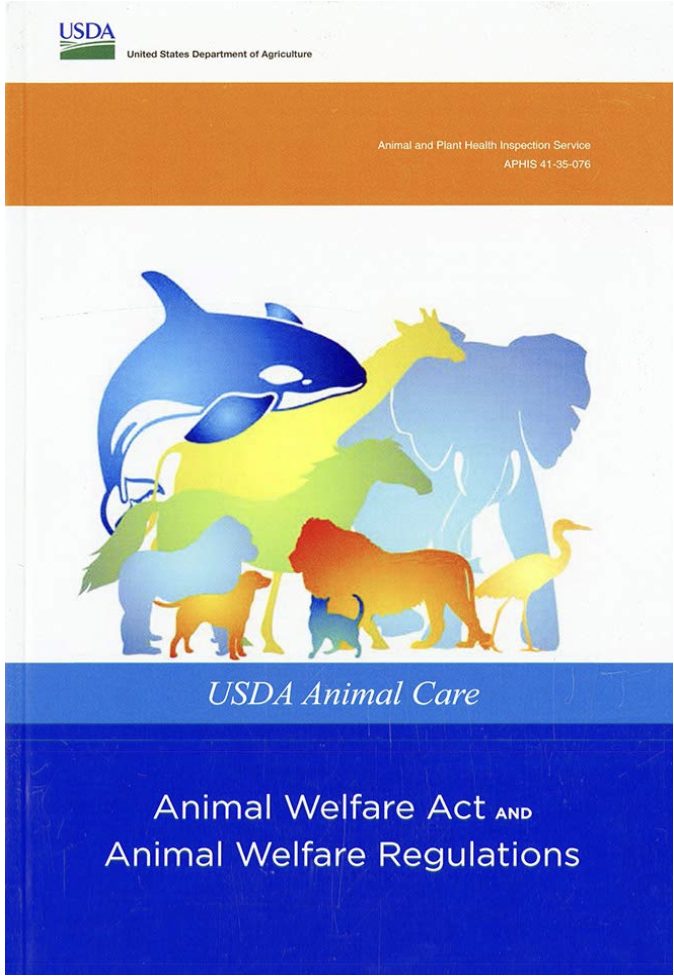The United States Department of Agriculture (USDA), APHIS Division (Animal Plant Health Inspection) is the governing entity that creates, monitors, and enforces the laws and regulations for animal welfare. The Animal Welfare Act and Animal Welfare Regulations are readily available to the public in what we commonly refer to as “the Blue Book.” The Blue Book provides crucial pieces of legislation to protect animals’ welfare in various settings, including research facilities, zoos, circuses, and commercial breeding operations. This book and its public availability aim to promote the well-being of animals by establishing minimum standards of care, including housing, feeding, handling, veterinary care, and transportation.
The Animal Welfare Act and Animal Welfare Regulations are designed to prevent animal mistreatment, neglect, and abuse. Having the information public can empower the general public to understand whether the organizations they support are ethical and provide optimal animal welfare.
Each year, the Animal Welfare Act and Animal Welfare Regulations may be subjected to changes as scientific knowledge expands and safety needs evolve. It is not uncommon for a roadside zoo or private owner to be unable to meet the improved regulations and call TCWR for a rescue. Due to our continuous cooperation with the USDA and compliance with the Animal Welfare Act over the years, Turpentine Creek Wildlife Refuge is one of the USDA’s go-to organizations for rescues involving big cats.
Overall, the Animal Welfare Act and Animal Welfare Regulations are important tools for ensuring the humane treatment of animals and promoting their well-being in various settings. They help prevent cruelty, regulate research, protect endangered species, ensure transparency and accountability, and maintain public trust in institutions that use or exhibit animals.

